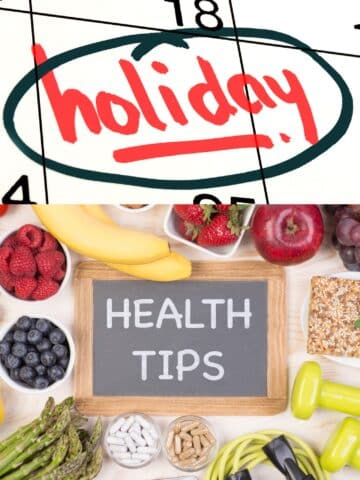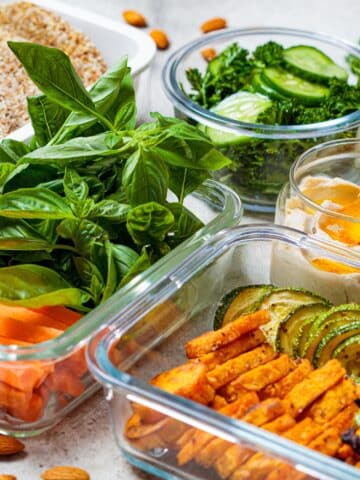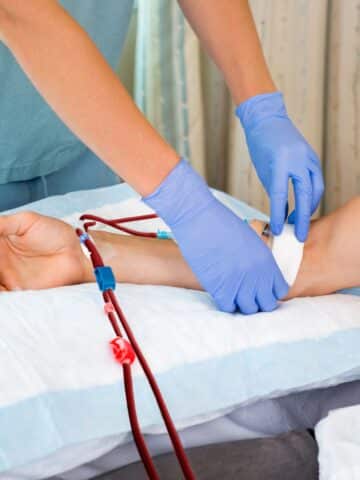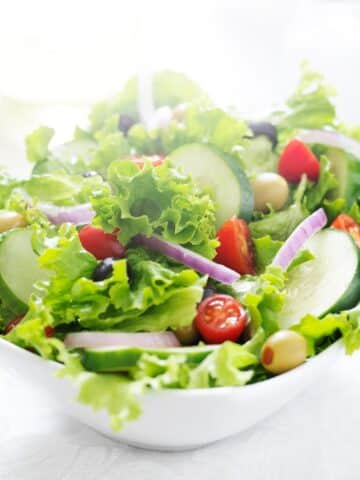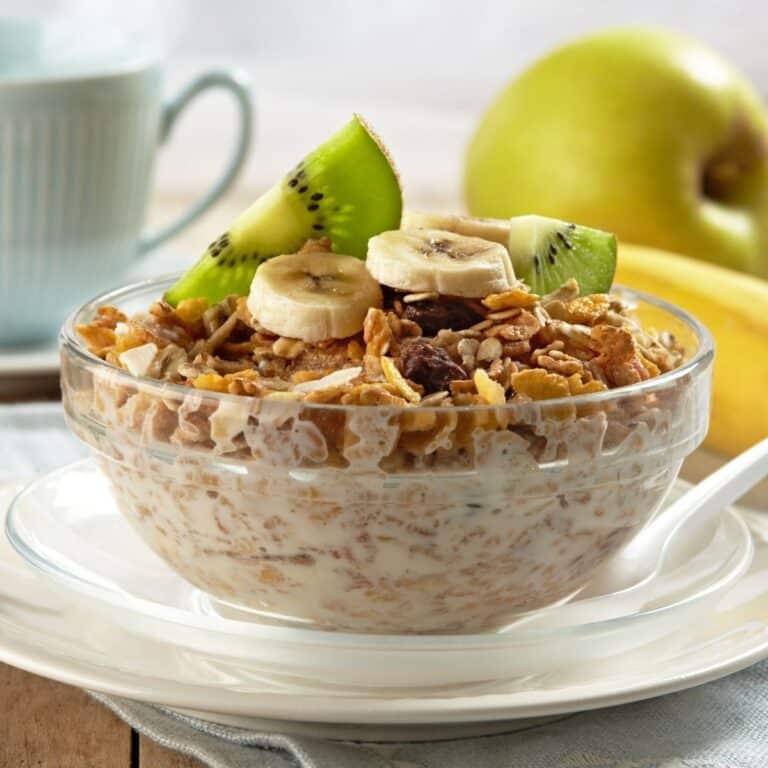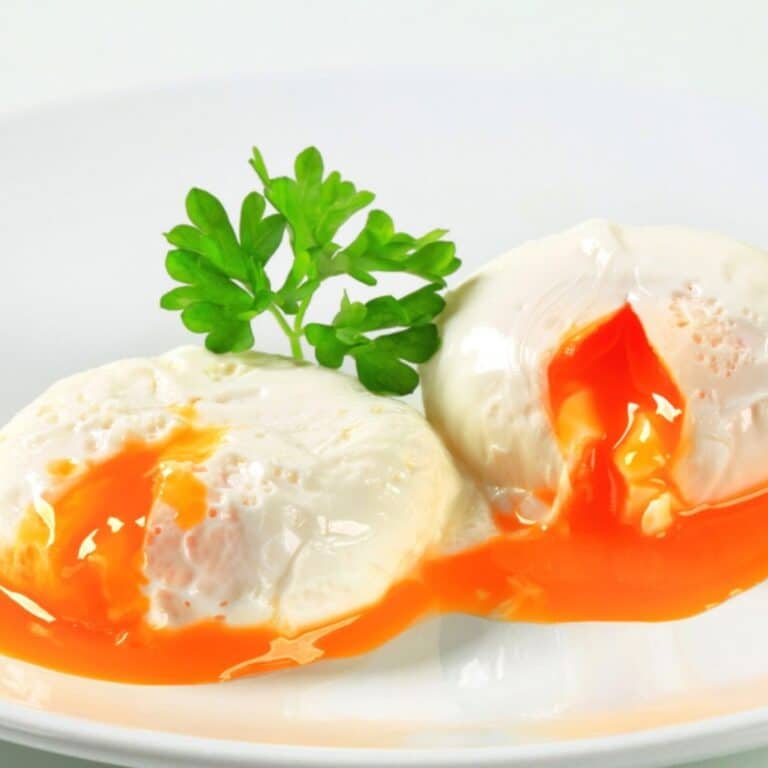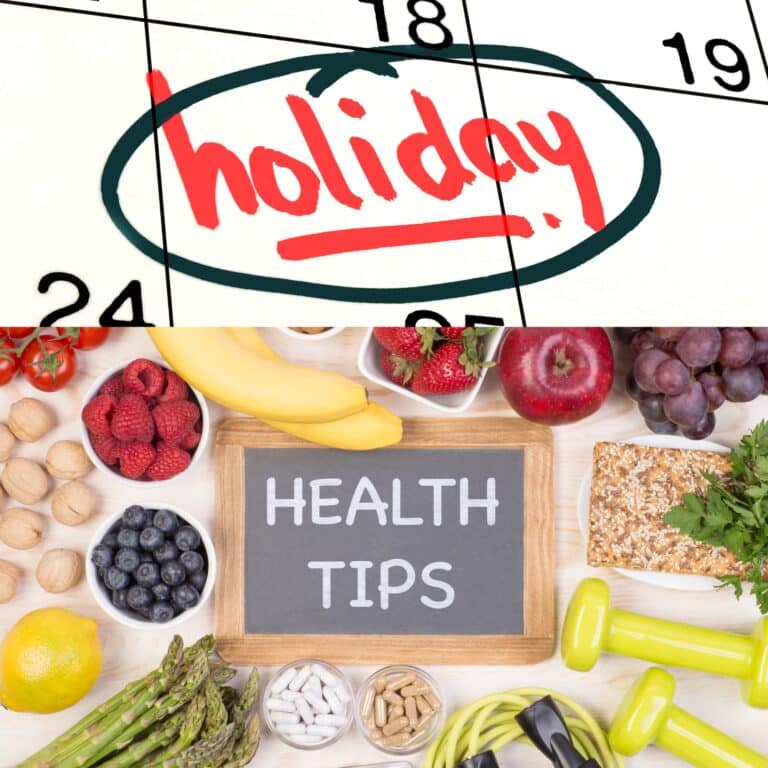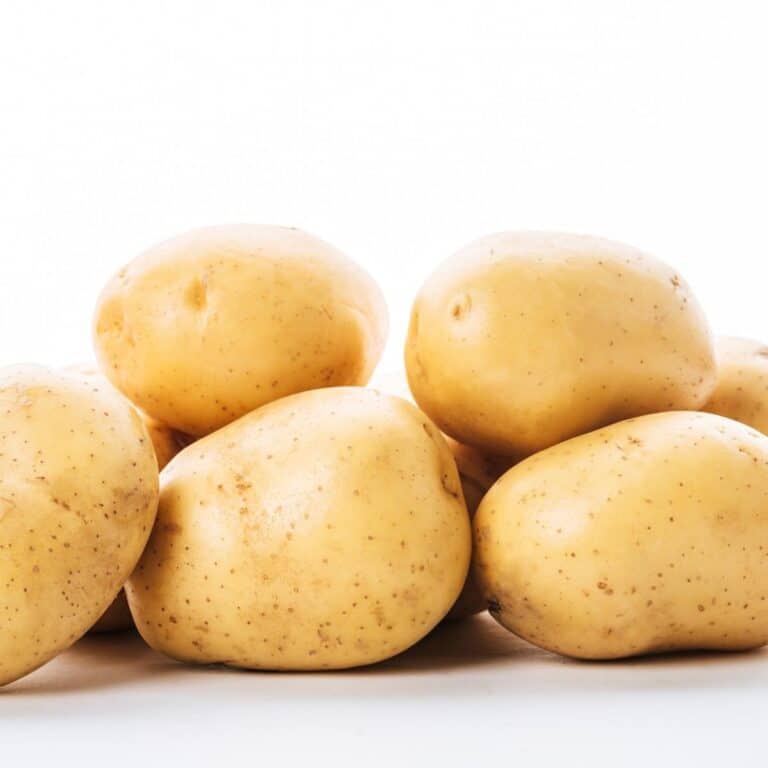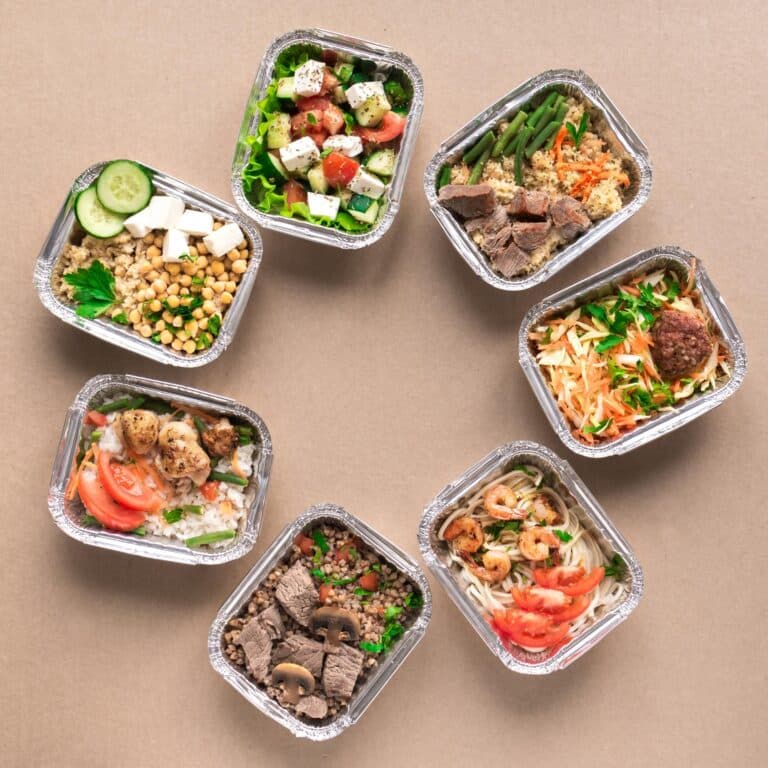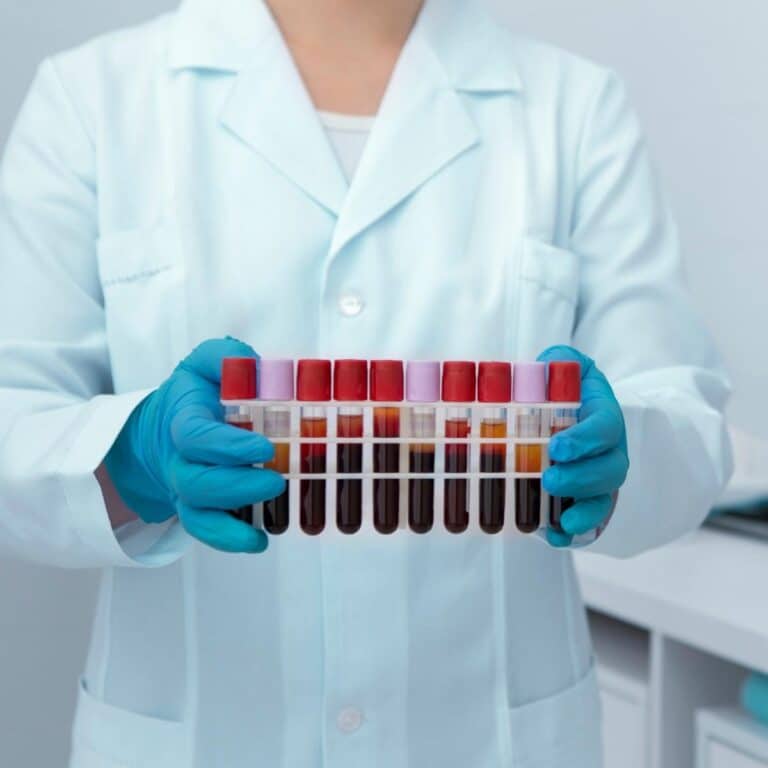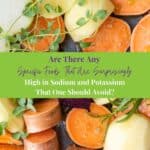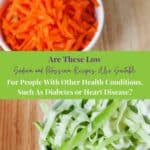Low Sodium Low Potassium Recipes for the Holidays
The holidays can be a stressful time for you or your loved ones if they are suffering from chronic kidney disease (CKD). Food and eating takes on a whole new meaning when a CKD diet is in play. This can be a little depressing as many people associate one of the joys of the holidays with feasting on holiday staples.
While it is true that you can no longer eat whatever you want, that doesn’t mean you have to miss out on all of your favorites! In fact, there are many kidney diet recipes catered to the holidays that will make your heart just as happy! Just remember to avoid using the salt shaker and you should have less issues with water retention while enjoying the holidays (foods with highest water content).
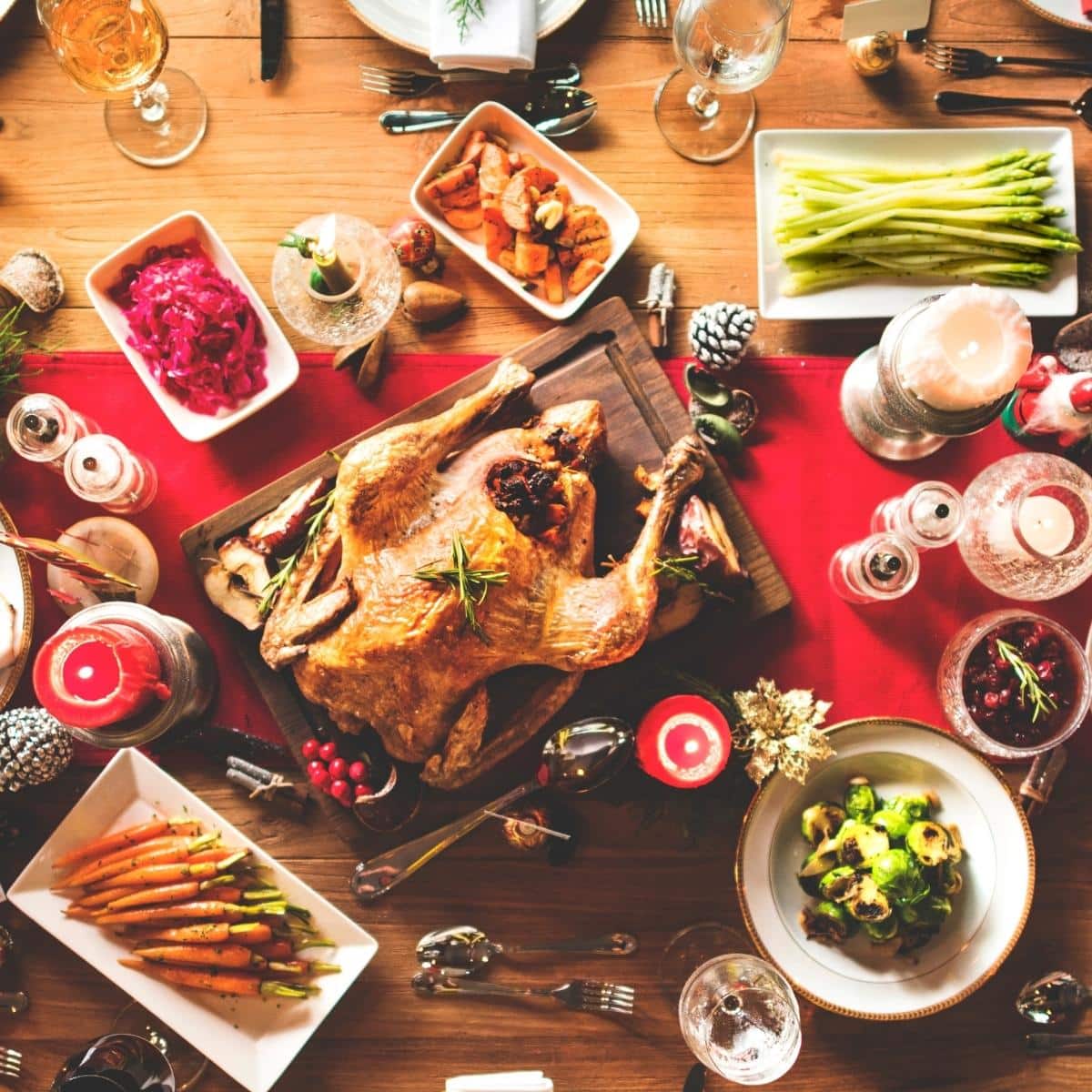
In this post, we will cover CKD diet recipes (ckd diet guidelines) to replace or substitute popular holiday favorites that everyone will enjoy, and won’t have you worrying about things like phosphorus, sodium, and potassium while enjoying family get-togethers. What happens if your potassium levels are high?
Jump to:
- Key Takeaways
- Low Sodium Substitutions for Holiday Go-Tos
- Low Potassium Substitutes for Holiday Favorites
- Kidney-Friendly Desserts
- Tips for Cooking Kidney-Friendly Holiday Meals
- Portion Control During the Holidays
- Kidney-Friendly Beverages
- Communicating With Hosts as a Guest
- Frequently Asked Questions
- Enjoy The Holidays Without Compromising Your Health!
Key Takeaways
- CKD patients need low sodium holiday substitutions to prevent fluid retention and blood pressure issues.
- Opt for kidney-friendly alternatives like turkey, low-sodium ham and beans, or herbed sausage stuffing.
- Avoid high-sodium brined turkey and ham, choosing roasted turkey instead.
- Excess sodium can lead to complications like edema and electrolyte imbalances in renal patients.
- Communicate dietary needs to hosts and adjust menus for a safe and enjoyable holiday season (kidney friendly holiday diet tips).
For More Recipes and Ideas --->> Get Your Free Meals and Recipes That Are Perfect for Pre-Dialysis Diets, Pre-Dialysis with Diabetes, or Dialysis Diets.
Low Sodium Substitutions for Holiday Go-Tos
For CKD patients following a renal diet, opting for low sodium substitutions during the holidays is vital. High sodium intake can worsen fluid retention and elevate blood pressure, straining already compromised kidneys. Choosing lower sodium alternatives helps maintain electrolyte balance, blood pressure, and overall kidney function.
By avoiding excessive sodium-laden holiday foods, CKD patients can minimize the risk of fluid buildup, hypertension, and further kidney damage, ensuring a healthier and more enjoyable festive season while prioritizing their renal health.
Here are some holiday staples and how you can still enjoy your holidays meals while keeping your sodium low:
Ham
While many of us love to eat ham, it is a meat with high sodium content. This means it should not be your first choice during the holidays if you are on a CKD diet.
There are many kidney-friendly alternatives to ham, such as turkey or chicken, but if you absolutely want a meal with ham, then this ham and beans recipe will be a great option. It has decreased the milligrams of sodium from classic ham and beans, yet it does still have a higher content than other CKD meat recipes, so enjoy it in moderation.
Can you eat a hamburger on a renal diet?
Brined Turkey
Turkey is a kidney-friendly meat for those on CKD diets and it has many recipe options and varieties. But, a brined turkey is very high in sodium, so it will not be as renal friendly as a roasted turkey. This recipe shows you how to create a roasted turkey that anyone with chronic kidney disease can enjoy for the holidays.
Can you eat turkey bacon on a renal diet?
Stuffing
During the holidays stuffing is a staple side dish. However, typical stuffing recipes are high in sodium, carbs, and calcium which is a no-go for anyone with kidney disease. This herbed sausage stuffing recipe is a delicious and unique take on your typical stuffing, and the best part is, it is low sodium and low carb!
That way your kidney concerned guests can enjoy this dish without worrying about the effects on their health or sodium levels.
Swedish Meatballs
A fresh new take on Swedish Meatballs (kidney friendly meatballs) this holiday season is this low sodium barbecue meatballs recipe. This recipe is specifically tailored for those on renal-friendly diets and contains low sodium spices and meats. While this recipe uses beef, the blend of spices will taste just as delicious if used with ground turkey or chicken.
Green Bean Casserole
Green bean casserole is another popular holiday side, and luckily, green beans are already a kidney-friendly vegetable! That means that you won’t have to deviate much from your usual classics, and this recipe is a wonderful kidney-friendly option.
While this recipe is a little on the higher potassium side it is low in sodium, phosphorus, and calcium. With this recipe, you can enjoy this classic dish unencumbered by your diet.
Gravy
Gravy is a necessity during the holidays, and pairs deliciously with your roasted turkey. There are a few dangers with premade or store-bought mixes, though, as they are notoriously high in sodium content. Gravy consistency can be achieved without resorting to high-salt broths.
Use cornstarch as a thickener instead of flour for better control over the sodium content. For flavor enhancements, opt for fresh herbs like rosemary and thyme or spice blends that are sodium-free. This recipe will give you some tips to create a savory homemade gravy.
Cheese Fondue
Which cheese is good for ckd patients? Cheese fondue is a fun party food that you can use to dip in veggies, breads, fruit, and more. However, if you have chronic kidney disease there are some cheeses that should be avoided.
Overly processed and harder cheeses are often high in phosphorus and are a major contributor to excessive sodium content. Meaning your Velveeta, processed cheddar, and hard cheddars will be higher in these levels.
That doesn’t mean you have to abandon your fondue though. If you incorporate a softer, more low-fat cheese such as brie or natural Swiss into your mix, then the content of sodium, potassium, and phosphorus is much lower. This recipe is a great healthy start, you can just replace gruyere with brie.
When preparing gravy and cheese fondue, it's important to use herbs, spices, and other flavorful ingredients that don't increase your salt or potassium intake. Consider using fondue variations with low-sodium cheeses to meet dietary requirements. Swiss or cheddar cheese can be a good start.
Crackers, Chips & Dip
An appetizer with many flavors and variations is your chips and dips. While there are a lot of issues with high sodium and phosphorus content from store-bought dips and chips, you can still tailor this appetizer for those searching for kidney-friendly options.
One of those options is this white bean dip recipe. This yummy dip is made with white beans and is salt-free and sugar-free. This is guaranteed to have zero preservatives, GMOs, and is even gluten-free!
You'll be surprised at how many delicious salt-free dip options are available for your holiday spread. The variety of dips is immense, ranging from creamy guacamole to tangy hummus and smoky baba ganoush.
Flavor enhancement is key in these recipes, with fresh herbs and spices stepping in where salt can't. Your spice usage can vary according to taste; think bold cumin or subtle thyme.
Sausage & Bacon
If you are looking for some renal-friendly alternatives to your usual breakfast favorites then this recipe is the perfect choice for sausage. While this recipe calls for pork, you could also mix in ground turkey or beef. This is a spicy and flavorful sausage for you and your family to enjoy at a holiday breakfast.
If you are looking for a bacon alternative (low sodium breakfast) then you will have a hard time finding one that contains low salt content, as bacon is usually a very high sodium option that should be avoided by those with chronic kidney disease. That is, until this recipe showed us that you can enjoy a salt-free bacon option!
This recipe is a little more complicated and requires twice cooking slices of pork belly, the end product is a perfect alternative that you can enjoy even if you are on a strict CKD diet.
Rolls, Cornbread or Biscuits
Cornbread is a beloved and traditional component of Southern holiday meals. However, it's important to note that some cornbread recipes can be high in calcium and potassium, which may pose challenges for individuals with Chronic Kidney Disease (CKD).
In order to make informed dietary choices, it is essential to expand our understanding of these ingredients and provide suggestions for adjustments to the diet for those managing CKD.
Cornmeal, the main ingredient in cornbread, contains varying amounts of potassium and phosphorus, both of which need to be monitored in a CKD-friendly diet.
To adjust your diet for CKD while still enjoying cornbread during the holidays, consider the following suggestions:
1. Portion control: Moderation is key. Be mindful of the serving size, as consuming smaller portions of cornbread can help limit the intake of potassium and phosphorus.
2. Ingredient substitutions: Modify the cornbread recipe to reduce the potassium and phosphorus content. Consider replacing a portion of cornmeal with whole wheat flour, as it tends to have lower levels of these minerals. Additionally, using low-phosphorus milk or a milk substitute can help reduce phosphorus intake.
3. Variety is key: Instead of solely relying on cornbread, diversify your holiday meal with other low-potassium and low-phosphorus options. This could include rolls made from white flour or biscuits, which typically have lower levels of these minerals. Remember to consider portion sizes and overall dietary balance.
4. Phosphorus binders: If prescribed by your healthcare provider, take phosphorus binders as directed. These medications can help control phosphorus levels in the body, allowing for more flexibility in your diet while managing CKD.
It's important to note that these suggestions are general guidelines and may not be suitable for everyone. Each individual's dietary needs may vary, so it is crucial to work closely with healthcare professionals, including dietitians and nephrologists, to create a personalized CKD-friendly meal plan.
By being mindful of portion sizes (portion control for CKD patients), making ingredient substitutions, seeking professional advice, and incorporating a variety of low-potassium and low-phosphorus options, individuals with CKD can continue to enjoy the flavors of Southern holiday meals while prioritizing their kidney health.
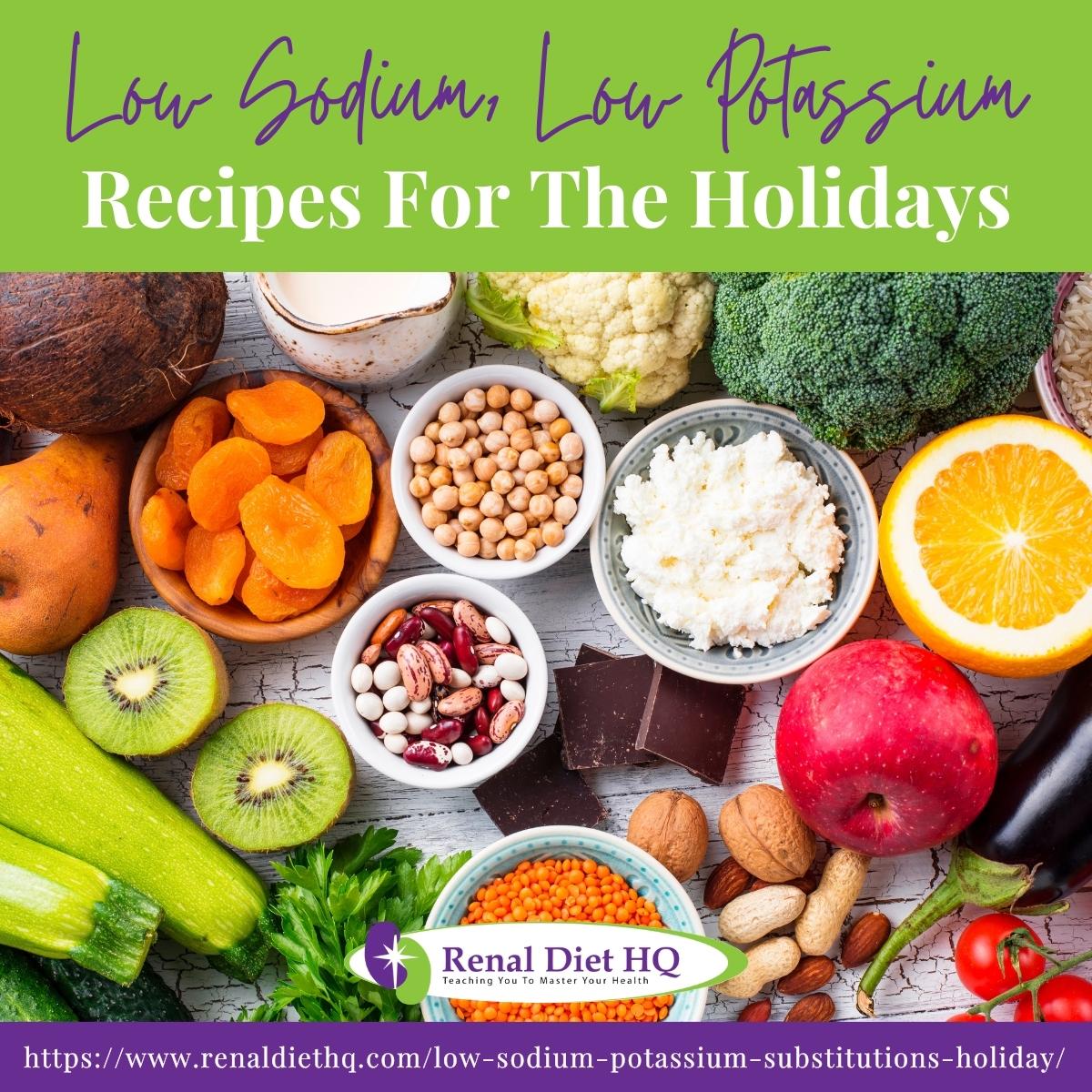
Complications of High Sodium Intake
How much sodium per day for renal diet? High sodium intake during the holidays poses significant complications for renal patients. Excess sodium can exacerbate fluid retention and elevate blood pressure, increasing the strain on already weakened kidneys.
This can lead to edema, shortness of breath, and further kidney damage. Additionally, heightened sodium levels can disrupt the body's electrolyte balance, negatively affecting heart function and causing imbalances in potassium and calcium levels.
Renal patients are particularly vulnerable due to their reduced kidney function, which impairs the body's ability to effectively filter and regulate sodium. By indulging in sodium-rich holiday foods, renal patients risk aggravating their condition, potentially leading to hospitalization, increased medication requirements, and accelerated kidney deterioration.
Prioritizing low sodium alternatives is crucial to prevent these complications and safeguard kidney health during the festive season.
Sodium Allowed on a Renal Diet
On a renal diet, sodium intake is carefully monitored due to its impact on kidney function and overall health. Typically, renal patients are advised to limit their daily sodium intake to around 1,500 to 2,000 milligrams, which is significantly lower than the average Western diet.
This restriction helps manage fluid balance, control blood pressure, and reduce the strain on compromised kidneys. Excessive sodium can lead to fluid retention, high blood pressure, and worsen kidney damage.
Renal patients must be vigilant about reading food labels, choosing fresh and minimally processed foods, and avoiding high-sodium ingredients such as table salt, canned goods, processed meats, and certain condiments (condiments for kidney disease).
Adhering to the recommended sodium intake is essential for maintaining kidney health and preventing complications associated with kidney disease. Take these steps to improving kidney health.
Low Potassium Substitutes for Holiday Favorites
For CKD patients on a renal diet, opting for low-potassium substitutes for holiday favorites is crucial. Elevated potassium levels can stress compromised kidneys and lead to dangerous complications.
Substituting high-potassium ingredients with low-potassium alternatives helps maintain safe potassium levels, preventing hyperkalemia. This is particularly significant during holidays when indulgence in festive foods can inadvertently spike potassium intake.
By making thoughtful choices, CKD patients can enjoy holiday meals without jeopardizing their kidney health, ensuring a safer and more enjoyable celebration.
Here are some holiday alternatives you can enjoy to keep up with a low potassium diet:
White Potatoes
For those with chronic kidney disease, white potatoes are known to have a high potassium content. However, this recipe for garlic mashed potatoes brings the potassium content down to a level that those on kidney-friendly diets can enjoy. The key in this recipe is to double boil the white potatoes to leach out the potassium content.
Sweet Potatoes
Similarly, to white potatoes, sweet potatoes have a higher potassium level than most diets can allow for with chronic kidney disease. This recipe gives a lot of helpful information about tailoring recipes to being kidney-friendly.
Once again leaching the potatoes is key in reducing the potassium content. This also offers an alternative to using spaghetti squash in this recipe to further reduce the excess potassium content (sweet potatoes and kidney disease).
Cream Spinach
A light alternative to cream spinach that is low potassium and low calcium is this barley, corn, and spinach salad. While creamed spinach usually contains high calcium, among other factors that are not kidney-friendly, this spinach option is very different. This is a recipe that also contains no salt, sugar, MSGs, preservatives, or GMOs. It is also gluten-free, which is great for those also combating celiac disease.
Pumpkin Pie
While your family’s pumpkin pie may be creamy, delicious, and irresistible, it is also likely high in potassium content. To still have the basic flavors of this dessert but be able to enjoy it with chronic kidney disease, then this recipe is what you need. A wonderful combination of crispy textures and pumpkin spice flavors, this contains low potassium, sodium, calcium, and phosphorus!
Pecan Pie
Pecan pie is best to be avoided if you are on a CKD diet. This is the usual suspect on the dessert table that is high in calcium, sugar, and potassium. That being said, you can replace this option with this apple cake.
It is quite an easy recipe that has a great holiday flavor and contains all healthy ingredients! You’ll need cinnamon, sugar, flour, oil, eggs, orange juice, baking powder, and vanilla for this recipe. This cake is full of flavor and texture, and even if it isn’t a pecan pie, it will still give you holiday flavors like cinnamon and apple, and it's low in potassium content.
Roasted Brussel Sprouts
You wouldn’t immediately think that Brussel sprouts contain high potassium, but in fact, several recipes do have high potassium. However, this simple roasted Brussel sprouts recipe is very low in potassium and is an easy option for this favorite dish. This recipe uses fruit vinegar, olive oil, and parmesan cheese to make a crispy flavorful side or snack.
Winter Squash
Winter squash is a simple dish during the holidays, but it is usually high in potassium content. An interesting and healthy take on this classic is this stuffed spaghetti squash recipe. Spaghetti squash is a perfect low potassium alternative, and this dish offers more flavors and ingredients to truly create a unique side dish for the holiday table.
This recipe is not only kidney healthy, but heart-healthy, so it is all around good for those watching their diets and health. A great low sodium spice that is used in this recipe is called Grandma’s Loaf and More, which is a wonderful addition for flavor in kidney-friendly dishes.
Pudding
Pudding comes in many forms, whether it is a chocolate pudding, bread pudding, or banana pudding. Some of these rich desserts are not kidney-friendly and can be high in potassium and calcium. An option that lines up with holiday flavors is this dairy free pudding recipe.
This recipe uses raisin bread, honey, vanilla, and almond milk. Using almond milk reduces the calcium content and using honey gives a more natural sugar option that is not as processed. This is a great warm dessert for those with a sweet tooth with sweet vanilla flavors.
Potassium-Reducing Cooking Techniques
Let's delve into various cooking techniques that can help reduce the potassium content in your holiday meals. Your ingredient selection plays a key role. For instance, opting for canned vegetables over fresh ones cuts down on potassium as the mineral leaches into the water during processing (leaching vegetables).
Another crucial method is boiling. This cooking technique reduces potassium levels in potatoes and other root vegetables considerably. Lastly, consider recipe modification by reducing or substituting potassium rich foods with lower alternatives.
Here's a quick guide:
| Cooking Methods | Potassium Rich Foods | Ingredient Selection |
| Boiling | Potatoes | Canned Vegetables |
| Steaming | Spinach | Whole Grains |
| Roasting | Bananas | Fresh Fruits |
These dietary guidelines will help you create healthier, low-potassium dishes this holiday season.
Low Potassium Ingredient Swaps
After exploring potassium-reducing cooking techniques, let's consider some low-potassium ingredient swaps. You're likely aware that certain foods are rich in potassium, but did you know there's a plethora of low potassium snacks available?
When shopping, scrutinize the labels (following a low sodium kidney diet) for the potassium content. As part of your commitment to serving others healthily, aim to maintain an optimal sodium-potassium ratio.
For instance, swap bananas (high in potassium) with apples (low in potassium). Or choose rice over potatoes. Making these simple changes can significantly reduce dietary potassium intake without sacrificing flavor or nutrition.
Remember to follow the Potassium Dietary Guidelines and keep servings of high-potassium foods minimal. By making informed decisions about ingredients and understanding their nutritional profiles, you'll be able to create delicious meals that meet dietary needs while still delighting taste buds.
Complications of Excess Potassium Intake
Excess potassium intake during the holidays can pose significant complications for individuals with chronic kidney disease.
The kidneys play a crucial role in regulating potassium levels in the body, and impaired kidney function in CKD can lead to potassium buildup, a condition known as hyperkalemia. During festive meals, dishes often include high-potassium ingredients like potatoes, tomatoes, and certain fruits.
If CKD patients consume excessive amounts of these foods, it can lead to dangerous potassium spikes, causing heart palpitations, muscle weakness, and in severe cases, cardiac arrhythmias or even sudden death.
To avoid these complications, CKD patients (Protein for CKD Patients by stage) must carefully plan their holiday meals, opting for low-potassium alternatives, controlling portion sizes, and adhering to their dietary restrictions.
Consulting a healthcare professional or dietitian can provide personalized guidance to ensure a safe and enjoyable holiday season for individuals managing their kidney health.
Kidney-Friendly Desserts
Being on a renal diet (renal diet food list) does not mean that you should miss out on desserts. It’s important to know what foods you can take and what foods you should avoid in order to keep potassium intake and sodium intake in check.
Lowering Potassium Intake
Kidney-friendly desserts with low potassium are essential for individuals with CKD. Some suitable options include baked apple slices sprinkled with cinnamon and a touch of honey, providing natural sweetness with minimal potassium.
Chia seed pudding made with almond milk and sweetened with a low-potassium sweetener offers a creamy treat rich in omega-3 fatty acids. A yogurt parfait with low-potassium fruits like berries, combined with crushed low-potassium graham crackers, offers a balanced and satisfying dessert.
Rice pudding prepared with low-potassium rice and almond milk, flavored with vanilla extract, can also be a comforting option.
These desserts prioritize flavor and health, allowing CKD patients to enjoy treats without compromising their dietary needs.
Healthy Dessert Alternatives
During the holidays, creating festive low-sodium desserts for renal patients is essential for their well-being.
A delightful option is a spiced baked apple, filled with a mixture of chopped nuts, cinnamon, and a touch of honey. Poached pears with a drizzle of reduced-sodium caramel sauce offer a luxurious treat without compromising kidney health.
A low-sodium berry trifle, made with layers of angel food cake, fresh berries (are strawberries kidney friendly?), and a light whipped cream, is a visually appealing and flavorful dessert. Another idea is a citrus fruit salad with a sprinkle of grated dark chocolate for a touch of indulgence.
These thoughtfully crafted desserts enable renal patients to enjoy the holiday spirit while adhering to their dietary restrictions.
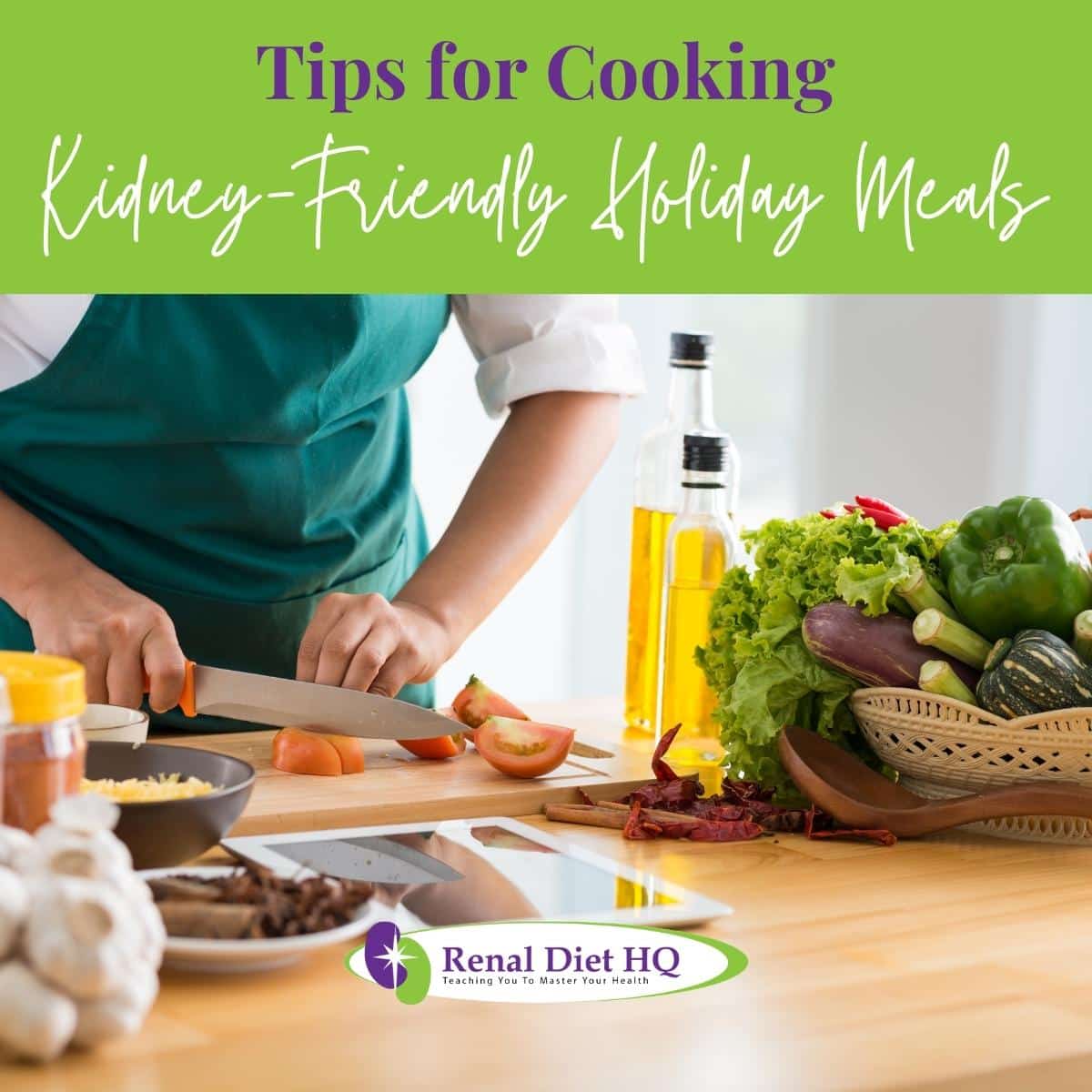
Tips for Cooking Kidney-Friendly Holiday Meals
When it comes to cooking kidney-friendly holiday meals, you'll find that mastering certain techniques can greatly enhance flavor without relying on high-sodium ingredients.
By learning how to substitute these ingredients with healthier alternatives, your dishes won't just be delicious but also beneficial for maintaining good kidney health.
This discussion will provide you with practical tips on how to introduce flavor in your cooking while keeping sodium levels in check.
Cooking Techniques for Flavor
Incorporating a variety of spices and herbs in your recipes can help you enhance flavor without adding extra sodium or potassium. Engage in a spice exploration, delve into the beautiful world of flavor enhancers such as cinnamon, cumin, or thyme. They're not just aromatic ingredients, they significantly boost taste levels.
Understanding diverse cooking methods is essential too. Roasting or grilling vegetables (grilling blood pressure) allows caramelization that brings out natural sweetness while reducing the need for added salts. Don't forget about umami boosters like mushrooms or tomatoes - they add depth to dishes naturally.
Sodium Substitutes
During the holidays, reducing sodium while maintaining flavor is crucial for health-conscious cooking. Replace table salt with herbs and spices like thyme, rosemary, and cumin to enhance taste. Utilize citrus juices, vinegar, or low-sodium soy sauce for a tangy kick.
Opt for fresh ingredients and limit processed foods, as they often contain hidden sodium. Experiment with homemade seasoning blends using garlic, onion powder, and paprika. Incorporate naturally savory ingredients like mushrooms, onions, and garlic.
When using canned goods, choose low-sodium versions or rinse thoroughly. Enhance dishes with aromatic ingredients like ginger and lemongrass. By exploring these sodium substitutes and cooking techniques, you can create flavorful holiday meals without compromising health.
Portion Control During the Holidays
During the holiday season, maintaining proper portion control is crucial for renal patients to enjoy festive meals while safeguarding their health. With tempting spreads and indulgent treats, understanding how to manage portion sizes and adjust protein intake can help prevent complications associated with kidney disease.
Proper Portion Sizes
Renal patients should pay close attention to portion sizes (renal diet meat portion control) to manage their nutrient intake and minimize strain on the kidneys. Focus on filling half of the plate with non-starchy vegetables like broccoli, spinach, and peppers.
Limit high-potassium foods such as potatoes and bananas. Use a smaller plate to visually control portions and prevent overeating. Consider using measuring tools or following portion control guidelines to avoid excess consumption of sodium and phosphorus, which can worsen kidney function.
Here's a simple guide for you:
| Food Group | Portion Size | Tips |
| Protein | Palm size | Choose lean meats |
| Carbohydrates | Fist size | Opt for whole grains |
| Fruits & Vegetables | Two fist sizes | Fill half your plate |
Adjusting Protein Intake
Why low protein diet in kidney disease? Protein intake is vital for renal patients, but excessive amounts can strain the kidneys. Opt for lean protein sources like skinless poultry, fish, and plant-based options such as beans and lentils.
Consider portioning protein to match individual needs; a palm-sized portion is a general guideline. Including high-quality protein in holiday meals can help maintain muscle mass without overburdening the kidneys. Be mindful of sauces and seasonings, opting for low sodium options to prevent fluid retention and blood pressure spikes.
Kidney-Friendly Beverages
Navigating kidney-friendly beverages during the holiday season requires careful consideration of fluid intake and ingredient choices. Renal patients (fluid restriction guidelines for CKD) must be mindful of maintaining fluid balance, as excessive consumption can strain the kidneys.
Simultaneously, hidden harmful ingredients like high sodium or potassium content in certain beverages can exacerbate kidney-related complications. Awareness of fluid intake monitoring and scrutinizing beverage ingredients is essential to ensure a joyful holiday while safeguarding kidney health.
Fluid Intake Monitoring
Monitoring fluid intake is crucial for individuals on a renal diet, especially during the festive holiday season. Renal patients should be vigilant about their fluid consumption to prevent fluid overload, electrolyte imbalances, and strain on the kidneys.
Aiming to match fluid intake with urine output helps maintain a healthy fluid balance. Remembering that many foods and beverages, like soups, gravies, and festive drinks, contribute to overall fluid intake is essential.
Consulting a healthcare professional can provide personalized fluid intake recommendations based on individual kidney function and dietary needs. By staying mindful of fluid intake and seeking expert guidance, renal patients can enjoy the holidays while safeguarding their kidney health.
Hidden Drink Ingredients
Navigating the holiday season on a renal diet requires careful attention to avoid harmful ingredients in drinks. Renal patients should be cautious about beverages high in sodium, potassium, and phosphorus. Readi to identify additives like phosphoric acid or potassium chloride is essential.
Opting for homemade drinks allows better control over ingredients. Choosing lower-sodium broths, herbal teas, and filtered water infused with citrus or herbs is advisable. Beware of hidden sources of sodium and potassium, such as flavored syrups or mixes.
Consulting a dietitian for guidance on safe beverage choices and ingredient substitutions tailored to individual renal needs can help renal patients enjoy the holidays without compromising their kidney health.
Communicating With Hosts as a Guest
When attending a social gathering, it's important to navigate host expectations and accommodations with tact and care. You'll find that open communication about your food preferences and restrictions (renal diet restrictions) is not just beneficial for you, but also helps the host in planning their menu.
Providing this information ahead of time can prevent potential dietary mishaps, ensuring that everyone enjoys the event without any unnecessary stress or discomfort.
Host Expectations and Accommodations
When attending holiday gatherings, clear communication is key to ensuring your dietary needs are met. Politely inform your hosts in advance about your low sodium and low potassium requirements, providing them with specific details about what foods to avoid.
Offer to bring a dish that aligns with your dietary restrictions to share with others. Express gratitude for their consideration and willingness to accommodate your needs.
During the event, kindly remind your hosts about your dietary restrictions and inquire about the ingredients used in the dishes. Be appreciative of their efforts and understanding, emphasizing your commitment to maintaining your health while still enjoying the festivities.
Effective communication fosters a supportive environment and helps ensure you have enjoyable and nourishing holiday meals.
Food Preferences and Restrictions
Hosting holiday meals with guests on a renal diet requires thoughtful adjustments. Prioritize open communication by reaching out to guests in advance to understand their dietary restrictions.
Plan a diverse menu with low sodium and low potassium options, incorporating fresh ingredients and limiting processed foods. Use herbs, spices, and citrus flavors for seasoning instead of salt. Provide clear labels for dishes, highlighting ingredients for those with dietary needs.
Offer a variety of protein sources such as lean meats, poultry, and plant-based options. Have a selection of kidney-friendly desserts like fruit salads or baked goods made with low sodium and low potassium ingredients.
Creating an inclusive and considerate dining experience shows your guests that you value their health and well-being during the festive season.
Frequently Asked Questions
Yes, several brands specialize in producing low sodium and low potassium foods to cater to the dietary needs of individuals with kidney issues.
Some notable options include "No Salt Added" or "Low Sodium" versions of canned goods by brands like Campbell's, Progresso, and Del Monte. "Hain Celestial" produces a range of low sodium and potassium foods under various labels. You can choose fresh or canned vegetables for a renal diet.
It's essential to read labels to ensure compliance with dietary restrictions. Consulting with a healthcare professional or dietitian can help identify suitable brands and products aligned with specific renal dietary needs.
Eating foods high in sodium and potassium can significantly impact individuals with kidney disease. High sodium intake can lead to fluid retention (fluid restrictions for dialysis) and increased blood pressure, worsening kidney function.
Excess potassium can be dangerous, as impaired kidneys struggle to regulate potassium levels, potentially causing hyperkalemia—an elevated potassium level that can lead to heart rhythm abnormalities.
Following a low sodium and low potassium diet is crucial for managing kidney disease, as it helps prevent fluid buildup, control blood pressure, and maintain safe potassium levels, ultimately supporting overall kidney health and reducing the risk of complications.
Consulting a healthcare professional or dietitian for personalized guidance is essential.
Dealing with feelings of deprivation during the holidays due to dietary restrictions can be challenging. However, there are strategies to navigate this. Focus on the positive aspects of your dietary choices, such as improved health.
Explore creative and kidney-friendly versions (kidney disease diet recipes) of traditional treats. Communicate your needs to friends and family, so they can offer support. Embrace the opportunity to try new recipes and flavors.
Remember that holidays are about more than just food—focus on spending quality time with loved ones. Seek out a support network, whether it's friends, online communities, or healthcare professionals, to share experiences and coping strategies.
Yes, certain foods can be surprisingly high in sodium and potassium, which should be avoided or consumed in moderation on a renal diet. Processed and packaged foods like canned soups, deli meats, and fast food often contain excessive sodium. High-potassium foods like bananas, oranges, tomatoes, and potatoes should also be limited.
Additionally, condiments like soy sauce and certain spice blends can be high in sodium. It's crucial to read nutrition labels, choose fresh, whole foods, and cook at home using herbs and spices for flavor instead of salt. Working with a healthcare professional or dietitian can help you make informed choices about your dietary restrictions.
Yes, many low sodium and potassium recipes can be suitable for individuals with other health conditions like diabetes or heart disease. These recipes often focus on whole, unprocessed foods, lean proteins, and healthy fats, which align with the dietary needs of these conditions. However, individual considerations are important, as people's health conditions can vary.
Consulting a healthcare provider or registered dietitian is recommended to ensure that dietary choices meet specific health needs. Adjustments may be needed, such as managing carbohydrate intake for diabetes or choosing heart-healthy fats for heart disease.
Customized guidance will ensure that dietary restrictions are met while promoting overall health.
Enjoy The Holidays Without Compromising Your Health!
Making low sodium and low potassium substitutions for holiday favorites is essential for CKD patients. By prioritizing these dietary adjustments, individuals can maintain electrolyte balance, blood pressure, and overall kidney function, reducing the risk of complications (avoid kidney failure with dietary changes).
Strategies such as choosing lean proteins, utilizing spices and herbs, and opting for fresh ingredients contribute to flavorful and kidney-friendly holiday meals. Portion control and mindful fluid intake are crucial for managing kidney health during festivities. Communicating needs to hosts and accommodating guests' dietary restrictions fosters a supportive environment.
While there are challenges in missing out on traditional treats, exploring alternative recipes, focusing on the positive aspects of dietary choices, and seeking support can mitigate feelings of deprivation. Ultimately, following renal dietary guidelines ensures a healthier, joyful, and more enjoyable holiday season (renal diet basics).

